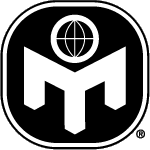World Trade in Information and Communications Technology.

This sector has barged into the headlines in recent months after a landmark ruling by the WTO. The body has agreed a ruling among members to cut tariffs on £838 billion worth of high technology goods and services. It has also added 200 products to a zero tariff list. This has been welcomed by most analysts, as the original 1996 IT agreement was perceived by many as being hopelessly out of date. This will help manufacturers such as Intel and Texas Instruments, but also brings the sector into the 21st century. New products have added to the zero tariff list, such as games consoles and even medical equipment. Since the original agreement, new products have been invented, such as tablets and GPS devices.
Developing countries also tend to remain as the biggest importers of information and communication technology goods, notably in Africa. Laptops, tablet PCs and mobile phones have leapt to 11% of world trade in merchandise, along with integrated circuits, exceeding trade in agricultural goods. China has also emerged as the world’s biggest exporter of of ICT goods. This reflects the huge labour pool available and the low cost of employment compared to more advanced economies in Western Europe. Against that statistic, China still remains as a huge importer of electronic components. Mexico is the only Latin American nation ranked amongst the world’s top 20 exporters of ICT goods. A few counties have succeeded in breaking into this lucrative enclave, such as Tunisia. The country exports consumer electronics and communications equipment to France.
Hewlett Packard is one high technology firm that has been forced by circumstances to take a long hard look at its business model. The firm has announced staff losses of up to 30,000 employees worldwide, as it split Hewlett Packard Enterprise away from the printer and PC Business. The firm still expects to attain a turnover estimated at $50 billion, but has come in for severe criticism over expensive acquisitions, such as buying Compaq for $25 billion in 2002. The firm became a pioneer in what was later known as Silicon Valley in California. It has been recognised always for being a firm that is led by R&D as much as presence in growing sectors. So many companies today still use ink-jet printers manufactured by Hewlett Packard. The cuts are designed to save £1.76 billion in annual costs, as presented by CEO Meg Whitman.
This is a reflection of a firm that has lost its way a little and is determined to get back on track towards sustainable growth. It also illustrates that firms in North America or Western Europe do not have a monopoly on high technology.
See: BBC Business or Unctad.org
Mark Sandford - Permission granted to freely distribute this article for non-commercial purposes if attributed to Mark Sandford, unedited and copied in full, including this notice.
Members can discuss this and other articles on the economics forum at International Mensa.